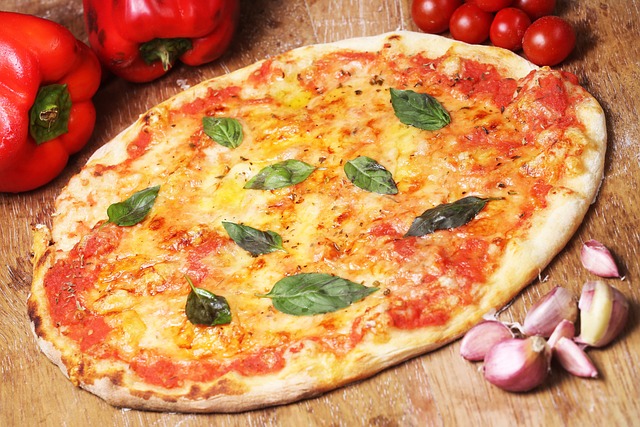Traditional Italian Pizza Recipes: A Journey Through Authentic Flavors
Are you ready to embark on a mouthwatering journey through the authentic flavors of traditional Italian pizza? Get ready to indulge in classic Margherita pizza, explore regional varieties, and uncover secret techniques that make these pizzas unique. From traditional toppings to creative combinations, we’ll guide you through Italian pizza‘s rich history and delicious traditions. So grab a slice and prepare for a culinary adventure like no other!
The History of Italian Pizza
Italian pizza has a long and fascinating history. Its origins can be traced back to ancient times when it was already enjoyed in various forms. Over the centuries, pizza has evolved and transformed into the beloved dish we know today. The evolution of Italian pizza is an intriguing journey of culinary innovation and cultural exchange.
Italian pizza originated in ancient Roman flatbreads, which were topped with various ingredients such as olive oil, herbs, and cheese. However, it wasn’t until the 18th century in Naples that the modern version of pizza started to take shape. Neapolitan pizzaiolos began adding tomatoes as a topping, resulting in the classic Margherita pizza we now associate with Italy.
Throughout its history, Italian pizza has continued to evolve. It gained popularity among working-class communities in Naples before spreading throughout Italy and eventually crossing borders to become a global phenomenon. Today, you can find countless variations of Italian pizza worldwide while still savoring the traditional flavors that have made it an iconic dish.
Classic Margherita Pizza Recipe
For a classic Margherita pizza, preheat the oven to 500 degrees Fahrenheit.
You’ll need homemade pizza dough to make this iconic Italian dish, giving your pizza that authentic taste and texture. Once your dough is ready, roll it into a thin circle and transfer it onto a baking sheet or pizza stone.
Now comes the fun part – adding the toppings! Spread a generous amount of tomato sauce on the dough and top it with slices of fresh mozzarella cheese. Finally, sprinkle some basil leaves on top for that signature Margherita flavor.
However, if you’re feeling adventurous, feel free to experiment with Margherita pizza variations, like adding sliced tomatoes or drizzling balsamic glaze for an extra kick of flavor.
Bake in the oven for 10-12 minutes until the crust is golden and crispy.
Enjoy your homemade Margherita pizza straight from the oven!
Exploring Regional Pizza Varieties
If you want something different, try exploring regional pizza varieties to discover unique and delicious flavor combinations. Italy is known for its diverse culinary traditions, extending to its pizzas. Each region has unique pizza crusts that add a special touch to the dish.
For example, in Naples, the birthplace of pizza, you’ll find a thin and chewy Neapolitan crust that pairs perfectly with classic Margherita toppings.
Rome has a thicker and crispier crust called ‘pizza romana,’ often topped with lesser-known Italian ingredients like guanciale (cured pork cheek) or pecorino cheese.
Uncovering Secret Pizza Techniques
As you explore different regional pizza varieties, you’ll uncover secret techniques that elevate the flavors and textures of the dish. One of these secrets lies in perfecting dough consistency. Getting the right feeling is crucial for a delicious crust, whether thin, crispy, or chewy. The key is finding the balance between a soft and elastic dough that stretches easily without tearing while maintaining enough structure to hold all your toppings.
Another critical aspect of achieving the ideal crust texture is understanding how to bake your pizza correctly. The secret here lies in finding the right temperature for your oven and preheating it sufficiently. A hot range will help create a crispy outer layer while keeping the inside moist and tender. To achieve that perfect crust, you can also experiment with baking surfaces like pizza stones or steel pans.
Italian Pizza Toppings: From Traditional to Creative
Italy offers a wide range of toppings, from classic Margherita to innovative combinations that push the boundaries of traditional pizza. Italy is a pioneer in creating delicious and unexpected flavors regarding unique pizza combinations.
You can find modern twists on Italian pizza toppings that will surprise your taste buds and leave you craving more. Imagine biting into a slice topped with prosciutto, arugula, and fresh figs or indulging in a pizza adorned with gorgonzola cheese, pear slices, and walnuts. These unconventional pairings showcase the culinary creativity of Italian chefs constantly experimenting with new ingredients and flavor profiles.
So next time you’re in Italy, don’t hesitate to try these modern twists on traditional Italian pizza toppings – they’ll take your pizza experience to a whole new level!
Frequently Asked Questions
What Are Some Common Pizza Toppings Used in Traditional Italian Pizza Recipes?
Standard toppings in traditional Italian pizza recipes include classic ingredients like tomato sauce, mozzarella cheese, and basil. However, as pizza has evolved, modern variations have explored unconventional elements for unique flavor combinations.
Are There Any Specific Techniques or Tips for Achieving the Perfect Thin and Crispy Crust in Italian Pizza?
To achieve a fragile and crispy crust, use these tips: First, roll the dough thinly. Second, preheat your oven to a high temperature. Lastly, don’t forget to use high-quality ingredients in your recipe.
What Are Some Lesser-Known Regional Varieties of Pizza in Italy?
Some lesser-known regional varieties of pizza in Italy include the Neapolitan Margherita from Naples, the Roman-style pizza al taglio from Rome, and the Ligurian focaccia di Recco. Explore these unique pizza styles from different regions in Italy.
Can You Suggest Any Creative and Unique Toppings That Can Be Used to Give an Interesting Twist to Traditional Italian Pizza?
You can elevate traditional Italian pizza with unique topping combinations. Get creative and experiment with ingredients like figs, prosciutto, arugula, or even truffle oil. These additions will give an exciting twist to your pizza experience.
Are There Any Specific Ingredients or Techniques That Make Italian Pizza Different From Other Types of Pizza?
Italian pizza has specific ingredients like San Marzano tomatoes, fresh mozzarella, and basil. The cooking methods, such as baking in a wood-fired oven, contribute to its unique taste and texture.





